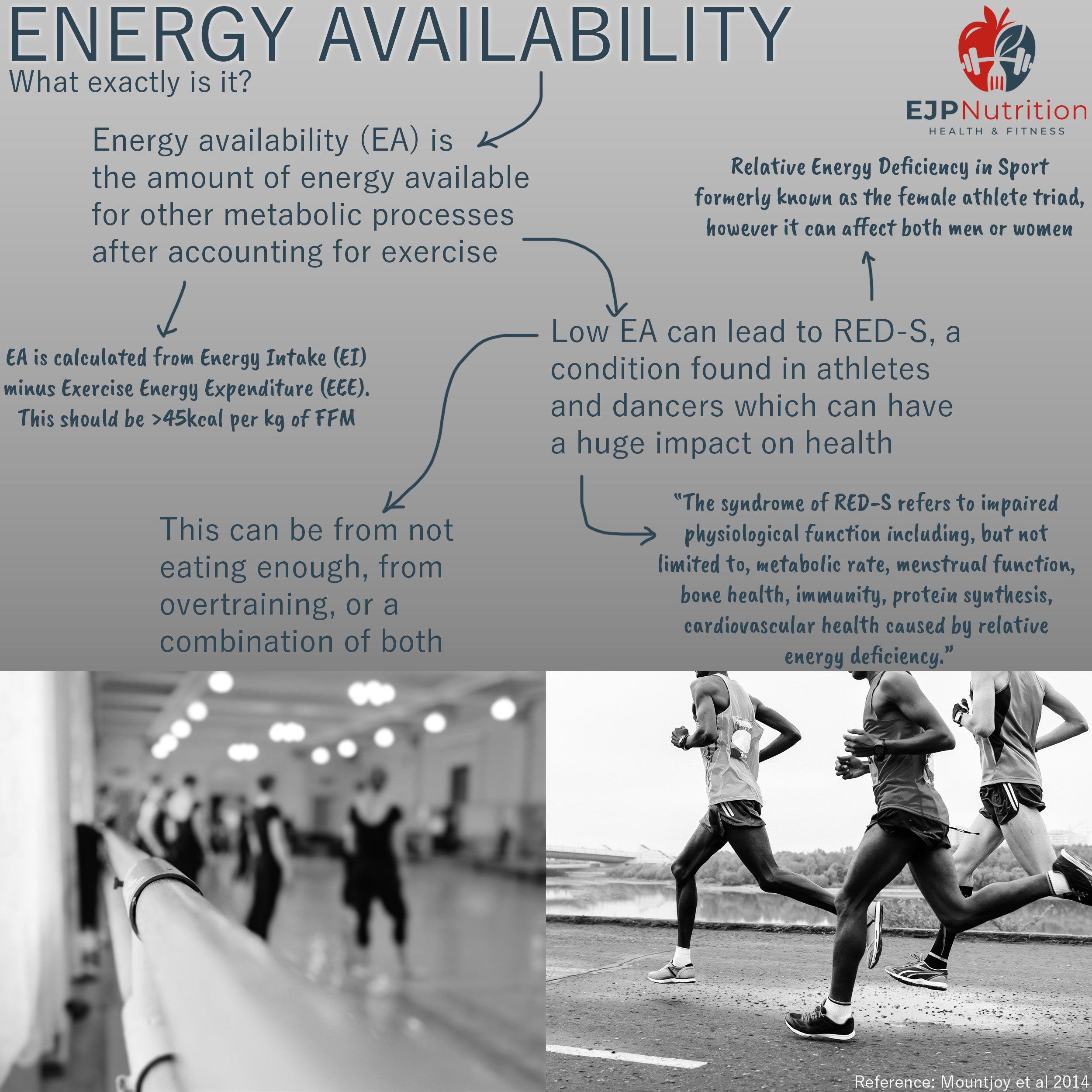Are you eating enough? Are you overtraining or exercising too much?
Either of these factors, or a combination, can lead to a lack of energy availability. Over a prolonged period of time this can have a large adverse impact on your health, as well as on performance.
Working it out
Energy availability can be calculated from working out your energy intake (EI) minus your exercise energy expenditure (EEE). This should be equal or greater than 45kcal per kg of fat free mass (FFM), or when dieting 30-45kcal. Less than 30kcal leads to hormonal disruption, which in females can affect their menstrual cycle.
With athletes and dancers, there’s often a focus on nutrient timing around training or recovery, along with which supplements can help aid performance. Energy availability (EA) is only an afterthought. However, having a low energy availability can lead to RED-S, which is short for relative energy deficiency in sport.
RED-S
RED-S was formerly known as the female athlete triad. That is amenorrhoea and a reduction in bone mass density as a result of a low EA. However RED-S expands on this as it can affect both men and women. Also it now has more than the original three aspects.
This syndrome includes numerous impairments to our physiological functions. It effects menstrual function when a woman’s cycle can become irregular or stop, bone health with a weakening of bones and immunity where people get sick more easily. It can also impact metabolic rate, protein synthesis and cardiovascular health.
This is why it’s so important that we consume enough energy. Especially if you regularly have a high training volume. Please be aware that appetite unfortunately isn’t a reliable indicator of when you aren’t eating enough. Keep an eye out for symptoms of low EA such as easily picking up bugs or frequently get ill, if you’re susceptible to bone fractures, or for females irregular menstruation.
References: Mac Nutrition Uni, Loucks et al 2011, Mountjoy et al 2014, Sonntag et al 2012, Stubbs et al 2004
(Reposted from Instagram)


